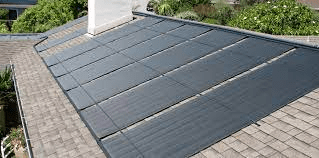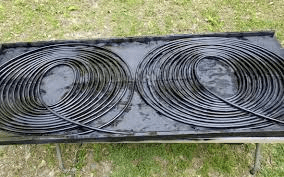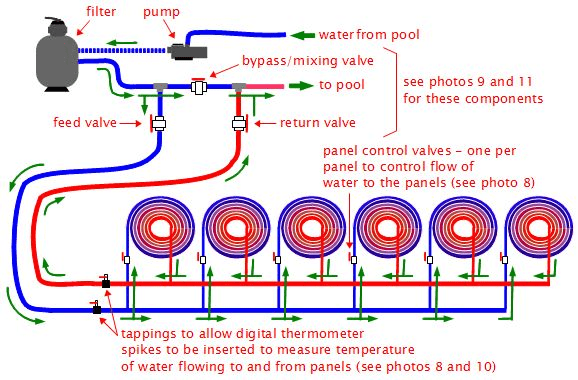Solar Pool Heaters
DIY Solar Pool Heaters
Solar pool heaters and hot water solar heaters are too different designs. One is used to heat a lot of water just a little bit while the other is used to heat a little water a lot. Using a hot water design for a pool will results in less than satisfactory results. What you want is a lot of surface area with many very small tubes all in parallel for high flow rates and high efficiency. Something like a commercial pool solar panel:[1]
Diyers generally use landscape tubing in coils much like this:
But if you go this route, it is best to use several coils in parallel to keep the tube length short and flow rates higher. One of the biggest mistakes DIYers make is to use one very long tube coiled up. That creates a lot of head loss limiting the amount of flow through the panel. Higher flow rates through the tubing results in better efficiency. This is what you want (although the pump is shown backwards and solar valves should be used):
For a 400 sq-ft pool, you will want at least 200 sq-ft of panels. Using 1/2" tubing (0.7" O.D.), that is about 3500' of tubing.
Optimum Flow Rate for Solar Panels
Consult the panel manufacturer's documentation and then do the math. For example 40GPM is needed if you have 8 panels and the manufacture specifies 5GPM each.
Then install a FlowVis flow meter in the pool plumbing (about $150). Then it is a very simple matter of adjusting your VS pump to get the flow meter to read 40GPM. You should check the flow rate a few times a season, as filter resistance can change over time (as the filter gets dirty). You can then just tweak the VS pump speed to accommodate.[2]




